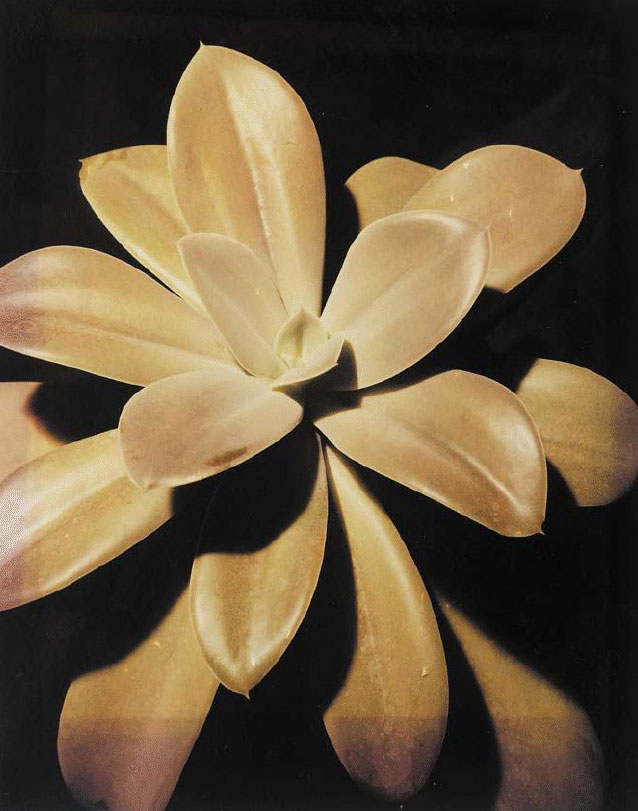- Relief printing
- Intaglio and planographic printing
- Color printing
- Bits and pieces
- Early photography in silver
- Non-silver processes
- Modern photography
- Color notes
- Color photography
- Photography in ink: relief and intaglio printing
- Photography in ink: planographic printing
- Digital processes
- Where do we go from here?
Color carbon printing

Color carbon print. Hi Williams. Echeveria. c. 1935. 16 3/4 x 13 1/4" (42.6 x 33.7 cm). The Museum of Modern Art, New York. Gift of Richard Benson. The carbon process was ideal for color separations, because it permitted complete freedom of choice of pigment for each separation. Invented in the 1860s, color carbon became practical only in the twentieth century, after photographic materials were invented that were sufficiently sensitive to the entire spectrum of visible color.
The principle behind the subtractive method is that three black and white negatives can be made of a color subject, each exposed through a filter in one of the additive primary colors, and these three negatives will then hold all the information needed to make a full-color picture. This is of course Maxwell’s principle applied again (as it was in the Autochrome): we capture a signal in three discrete parts of the spectrum, knowing that from that information we can generate the illusion of full color.
The separation negatives were printed in the complementary colors to the filters used to make them, so that the red-filter negative was used to print cyan; the green, magenta; and the blue, yellow. Conventional chemical photographic processes could not be used to print these separations because none handled color with any versatility: silver deposits were gray in color, gold toning was purple, and iron deposits were blue.
Carbon printing, however, used pigments of any color, allowing the color of the print to be controlled by the selection of the pigment used to make the carbon tissue. If relatively pure cyan, magenta, and yellow colorants were used to make three tissues, the separations could be printed in register, one on top of the other, to make a full-color picture.

